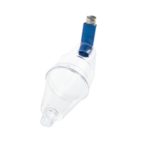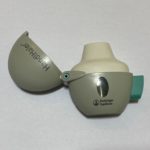What is Diabetes
Diabetes is a serious and lifelong condition that causes your blood glucose level to become very high. Millions of Nigerians live with diabetes or know someone living with diabetes. Diabetes isn’t yet curable, but it is very treatable. With the right treatment and management, people with diabetes can live long, happy and healthy lives. Our goal at Medic Drive is to give you the information, tools and resources to make you live a long, happy and healthy life even with your diabetes diagnosis. You can find other helpful links to further information about diabetes.

What causes diabetes?
One thing all types of diabetes have in common is that they cause people to have too much glucose, also known as blood sugar, in their blood. We all need some glucose because it is what gives us our energy. Glucose is produced in our body and released into our blood from the breakdown of carbohydrates in our food or drink.
We also all need a hormone called insulin, which is produced by our pancreas (a gland behind the stomach), because it is what controls the amount of sugar in our blood. Insulin moves the glucose in the blood into our cells where it gets broken down to produce energy for our bodies to function effectively.
Normally, when the amount of glucose is high in the blood, the pancreas senses this and releases the right amount of insulin to help move glucose into the cells, reducing the amount of glucose in the blood and thereby maintaining it within the normal range. When you have diabetes, this does not happen either because there’s not enough insulin to drive glucose into the cells, or that the insulin produced doesn’t work properly.
There are two main types of diabetes:
- Type 1 diabetes: This is when the body’s immune system attacks and destroys the cells that produce insulin
- Type 2 diabetes – This is when the body doesn’t produce enough insulin, or the body’s cells don’t react properly to insulin
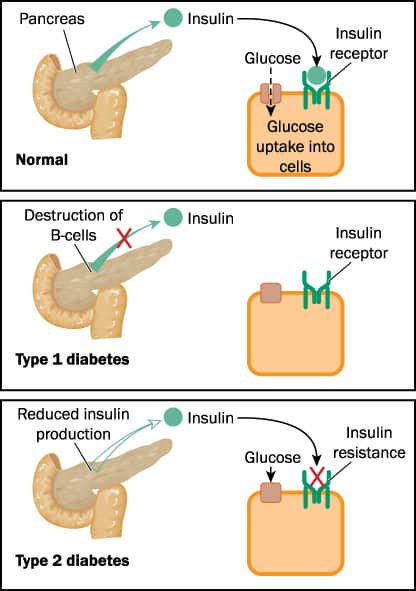
Type 2 diabetes is far more common than type 1. In Nigeria, most adults with diabetes have type 2.
There is also another type of diabetes called gestational diabetes which is when a pregnant woman’s blood glucose levels get so high that her body is not able to produce enough insulin to control it.
Pre-diabetes is when your blood sugar is above normal range but is not high enough to be diagnosed as diabetes. People with blood sugar levels above normal have a high risk of developing diabetes. If you think you have diabetes, it is important that you get checked and diagnosed, because if left untreated it will get progressively worse and you may develop complications of diabetes.
Type 1 Diabetes
Type 1 diabetes is a serious, lifelong condition where your blood glucose (sugar) level is too high because your body can’t make a hormone called insulin.
What causes Type 1 diabetes?
It is not known what causes Type 1 diabetes, but it is thought to be an autoimmune disease. The immune system normally produces antibodies to attack germs (e.g. bacteria and viruses) and foreign substances, in order to protect the body.
Autoimmune disease means that the immune system causes antibodies to attack parts of our body. When you have type 1 diabetes it means your body causes antibodies to attack and destroy the beta cells in your pancreas that make insulin which means you are unable to produce any insulin at all. Rarely, type 1 diabetes may be caused by severe inflammation of the pancreas or surgical removal of the pancreas.
When you have Type 1 diabetes, your body will still break down the carbohydrates from foods and drinks and turn it into glucose. However, because your body is not producing any insulin, the glucose in your blood is not driven into your cells where it can be further broken down and used to produce energy that should fuel your body. This causes more and more glucose to build up in your bloodstream.
Symptoms of Type 1 diabetes
- Weeing (urinating) more than usual – This is because your body is trying to get rid of the excess glucose.
- Feeling very thirsty – This is because you get thirsty from the excessive loss of fluid from your body, through weeing a lot.
- Tiredness – This is because glucose is not entering the cells to give you energy.
- Losing weight – As glucose is not entering the cells to give you energy, the body will try and get your energy by breaking down your fat stores.
These symptoms can come very quickly. You should see a doctor as soon as possible if you experience any of these symptoms.
Diagnosing Type 1 diabetes
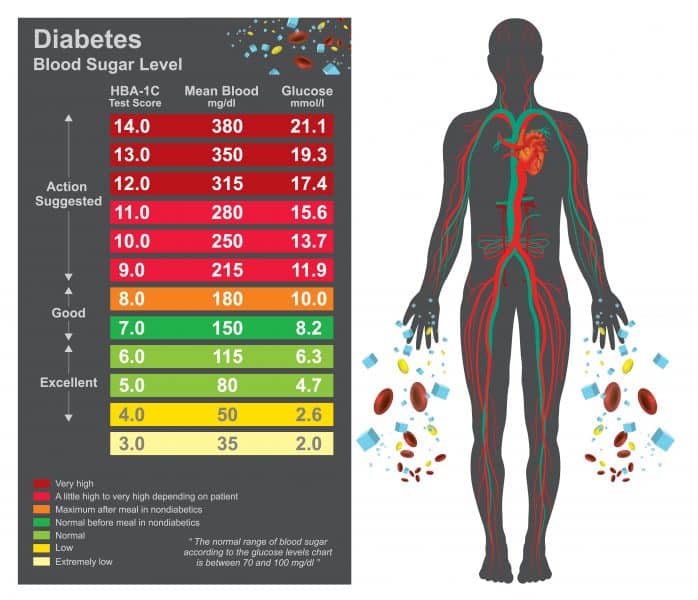
Methods and criteria for diagnosing diabetes
Haemoglobin A1c (HbA1c) test is not the primary diagnostic test used to diagnose diabetes because an increase in HbA1c may not be detected until a few weeks later. However clinicians may sometimes use it in combination with other tests.
To diagnose diabetes, a combination of diabetes symptoms including feeling very thirsty (polydipsia), weeing more than usual (polyuria), unexplained weight loss plus a blood glucose test is required. The blood glucose tests are:
Random blood sugar test
- Milligrams per decilitre (mg/dL)
- Millimoles per litre (mmol/L)
To have a random blood sugar test done, a sample of blood will be taken at a random time regardless of when you last ate. A random blood sugar level of 200mg/dL (11.1 mmol/L) or higher suggests diabetes.
Fasting blood sugar test
To have a fasting blood sugar test done, a sample of blood will be taken after fasting overnight. A fasting blood sugar level less than 100 mg/dL (5.6 mmol/L) is normal. A fasting blood sugar level from 100 to 125 mg/dL (5.6 to 6.9 mmol/L) is considered prediabetes. A fasting blood sugar level of 126 mg/dL (7 mmol/L) or higher on at least two separate tests, confirms you have diabetes.
Oral glucose tolerance test
To have an oral glucose tolerance test done, fasting blood sugar test is first done. You are then given a sugary drink containing 75g anhydrous glucose. Your plasma glucose concentration is tested periodically for the next two hours.
A plasma glucose concentration less than 140 mg/dL (7.8 mmol/L) is normal. A plasma glucose concentration reading of more than 200 mg/dL (11. mmol/L) after two hours indicates diabetes. A plasma glucose concentration reading between 140 and 199 mg/dL (7.8 mmol/L and 11.0 mmol/L) indicates prediabetes.
If you have no symptoms of diabetes, your doctor will usually do a confirmatory plasma venous test as diagnosis should not be based on a single glucose test. Your doctor will also do at least one additional glucose test on a different day with a result value in the diabetic range. The test can be any of a fasting, a random sample or an oral glucose tolerance test.
Management and Treatment of Type 1 diabetes
It is important that you control the amount of sugar in the blood because persistent high blood glucose levels can lead to complications of diabetes. Insulin moves the glucose in our blood into our cells where it is broken down to produce energy that fuels our bodies. You will need insulin to keep your blood glucose levels under control.
You can get insulin into your body either by injection or by using an insulin pump. You’ll also need to check your blood glucose levels throughout the day to make sure your blood sugar levels are not too low (hypoglycaemia) or too high (hyperglycaemia). You can test your levels by using a blood glucose testing device.
You can take a medication called incretin mimetics
You may be able to get an islet cell transplant which could stop you from experiencing severe hypos.
Type 2 Diabetes
Type 2 diabetes is a serious, lifelong condition where your blood glucose (sugar) level is too high because your body does not use insulin properly. This is what doctors call insulin resistance. When your body can’t use insulin properly, your blood sugar levels continue to rise.
The pancreas makes up for this by releasing more insulin. But over time, the pancreas can’t keep up and can’t make enough insulin to keep your blood sugar at normal levels. This causes your blood glucose levels to rise even higher.
Some groups of people have a higher risk for developing type 2 diabetes. Africans, Asians and the aged population.
What causes Type 2 diabetes?
We all need a hormone called insulin which is produced by our pancreas because it is what controls the amount of sugar in the blood. Insulin moves the glucose in our blood into our cells where it is broken down to produce energy that fuels our bodies.
Normally, when the amount of glucose is high in the bloodstream, the pancreas senses this and releases the right amount of insulin to help drive glucose into the cells. When you have type 2 diabetes, your body will still break down the carbohydrates from food and drink and turn it into glucose.
However, because your body is not producing enough insulin, or because your body does not use insulin properly, enough glucose is not driven into your cells to produce energy that fuels your body. This causes the glucose to continue to build up in your bloodstream.
Symptoms of Type 2 diabetes
- Feeling very thirsty – This is because you get thirsty from the excess loss of fluid through weeing a lot.
- Weeing more than usual – This is because your body is trying to get rid of the excess glucose.
- Tiredness – This is because glucose is not entering the cells to give you energy.
- Losing weight – As glucose is not entering the cells to give you energy, the body will try and get you energy by breaking down fat stores.
- Recurrent thrush
- Blurred vision
- Cuts that won’t heal
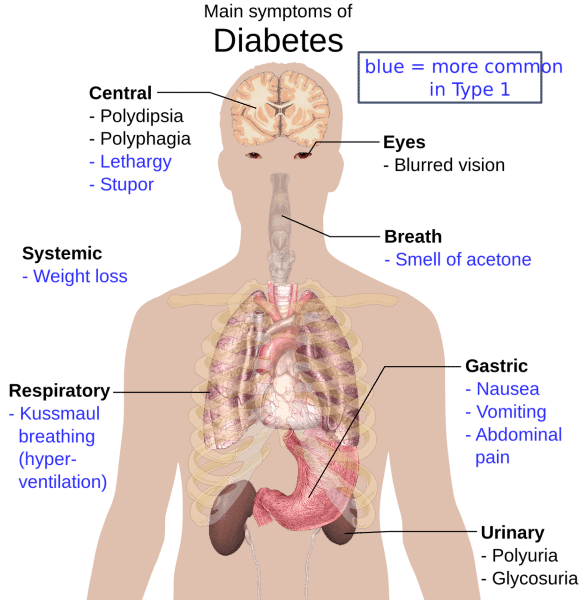
Diagnosing Type 2 diabetes
Haemoglobin A1c (HbA1c) testing to diagnose diabetes
Methods and criteria for diagnosing diabetes
The World Health Organisation recommends HbA1c of 48mmol/mol (6.5%) as the cut off point for diagnosing diabetes. A HbA1c value ≥6.5% (48 mmol/mol) is diagnostic for type 2 diabetes. A value of less than 48mmol/mol (6.5%) does not exclude diabetes diagnosed using glucose tests. Patients with no symptoms of diabetes should have laboratory venous HbA1c repeated.
Diabetes symptoms e.g. Feeling very thirsty (polydipsia) weeing more than usual (polyuria), unexplained weight loss and blood glucose tests:
Random blood sugar test
- Milligrams per decilitre (mg/dL)
- Millimoles per litre (mmol/L)
To have a random blood sugar test done, a sample of blood will be taken at a random time regardless of when you last ate. A random blood sugar level of 200mg/dL (11.1 mmol/L) or higher suggests diabetes.
Fasting blood sugar test
To have a fasting blood sugar test done, a sample of blood will be taken after fasting overnight fast. A fasting blood sugar level less than 100 mg/dL (5.6 mmol/L) is normal. A fasting blood sugar level from 100 to 125 mg/dL (5.6 to 6.9 mmol/L) is considered prediabetes. A fasting blood sugar level of 126 mg/dL (7 mmol/L) or higher on at least two separate tests, confirms you have diabetes.
Oral glucose tolerance test
To have an oral glucose tolerance test done, fasting blood sugar test is first done. You are then given a sugary drink containing 75g anhydrous glucose. Your plasma glucose concentration is tested periodically for the next two hours.
A plasma glucose concentration less than 140 mg/dL (7.8 mmol/L) is normal. A plasma glucose concentration reading of more than 200 mg/dL (11. mmol/L) after two hours indicates diabetes. A plasma glucose concentration reading between 140 and 199 mg/dL (7.8 mmol/L and 11.0 mmol/L) indicates prediabetes.
If you have no symptoms of diabetes, your doctor will usually do a confirmatory plasma venous test as diagnosis should not be based on a single glucose test. Your doctor will also do at least one additional glucose test on a different day with a result value in the diabetic range. The test can be either fasting, from a random sample or from oral glucose tolerance test.
Management and Treatment of Type 2 diabetes
Changing your diet can help control your blood sugar level.
Eat a lot of low glycaemic index fruits and vegetables, avoid sugary foods and drinks, eat fish, starchy and low glycaemic index (GI) foods that release sugar slowly e.g. pulses, lentils, muesli, whole-wheat pasta, beans, brown rice, all-bran cereal.
Exercise
Exercise lowers your blood glucose level so it can be an effective way to manage gestational diabetes. Ask your doctor about safe ways to exercise during pregnancy. Aim for at least 150 minutes of moderate intensity activity a week.
Your doctor may need to also prescribe oral medications or insulin to help you manage your diabetes. Type 2 diabetes usually gets worse over time. This means that even if you don’t need medications at first, you may need it as your diabetes progresses.
Gestational diabetes
Gestational diabetes is a type of diabetes that affects women who are pregnant. It usually affects women during the second or third trimester. Pregnant women with gestational diabetes don’t have diabetes before their pregnancy and it would usually go away after giving birth. It is usually diagnosed between weeks 24 and 28.

What causes gestational diabetes?
The placenta supports your baby while growing. The placenta makes hormones to help your baby develop. These hormones produced by the placenta during pregnancy can also make it difficult for your body to use insulin properly (insulin resistance) and consequently lead to a build-up of glucose in your blood.
During pregnancy, some women are not able to produce enough insulin to overcome this resistance. In the absence of insulin, glucose in your blood is not driven into your cells where it is broken down to produce energy that fuel your body. This makes it difficult to use glucose properly for energy, so the glucose remains in the blood and the levels rise, leading to gestational diabetes.
Who is at risk of gestational diabetes?
- Eating healthily and keeping active can significantly reduce their risk of developing gestational diabetes. But, you are at an increased risk if you:
- have a family history of diabetes
- have had gestational diabetes in a previous pregnancy
- are overweight or obese
- have had a very large baby in a previous pregnancy
- are Black or African Caribbean, South Asian, or Middle Eastern background.
How Gestational Diabetes Can Affect Your Baby
Gestational diabetes does not cause birth defects because it affects the mother in late pregnancy after the baby’s body has been formed. However, when your gestational diabetes is not treated or poorly controlled, your baby can get hurt. When you have gestational diabetes, your pancreas works extra hard to produce insulin, but the insulin does not lower your blood glucose levels.
Insulin does not cross the placenta, but glucose does and thereby gives the baby high blood glucose levels because of the extra blood glucose that has crossed the placenta. As a result, the baby’s pancreas makes extra insulin to get rid of the blood glucose. This extra insulin may cause the newborn to have very low blood glucose levels at birth. Furthermore, babies born with excess insulin are at risk for obesity, type 2 diabetes as adults and breathing problems.
As the baby gets more energy (from the glucose crossing the placenta) than it needs to grow and develop, the extra energy is stored as fat and can lead to macrosomia, also known as “fat” baby. This can lead to problems during delivery like damage to their shoulders. They also face some health problems.
Symptoms of gestational diabetes
High sugar levels can cause you to have the symptoms below. However, these symptoms are common during pregnancy anyway and aren’t necessarily a symptom of gestational diabetes
- Feeling very thirsty – This is because you get thirsty from the excess loss of fluid through weeing a lot.
- Weeing more than usual – This is because your body is trying to get rid of the excess glucose.
- Tiredness – This is because glucose is not entering the cells to give you energy.
Diagnosis of gestational diabetes
The criteria for diagnosing gestational diabetes is different. A woman will be diagnosed with gestational diabetes if she has either:
- a fasting plasma glucose level of 5.6mmol/l or above or
- a two-hour plasma glucose level of 7.8mmol/l or above.
Managing and Treating gestational diabetes
Controlling your blood glucose levels if you have gestational diabetes can help reduce the chances of having problems with the pregnancy. Your doctor will usually monitor you closely during pregnancy and labour to check if treatment is working and for any other problems.
Checking your blood sugar level
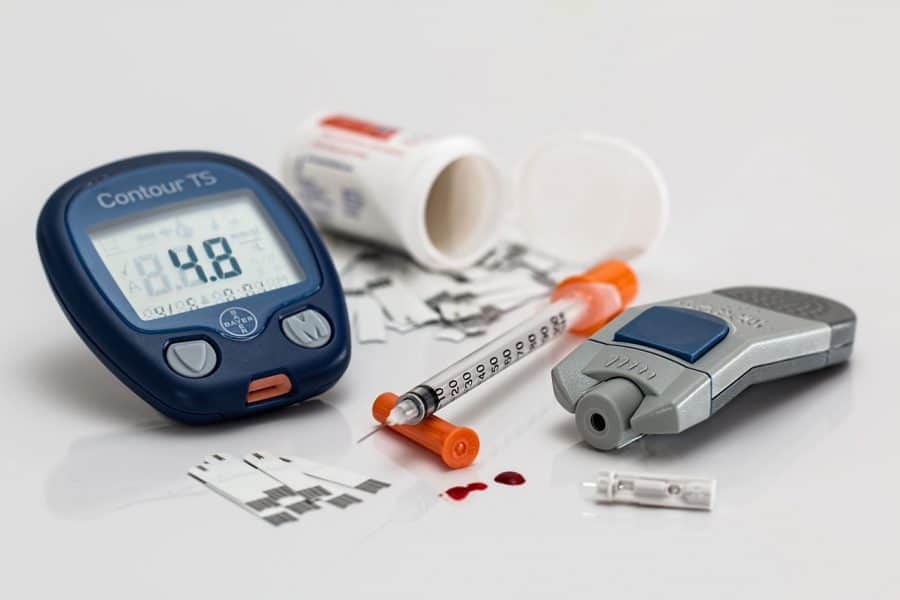
Use the testing kit to check your blood sugar level. Make sure you know how to test your blood sugar level correctly, what reading you should be aiming for, when and how often to test your blood sugar.
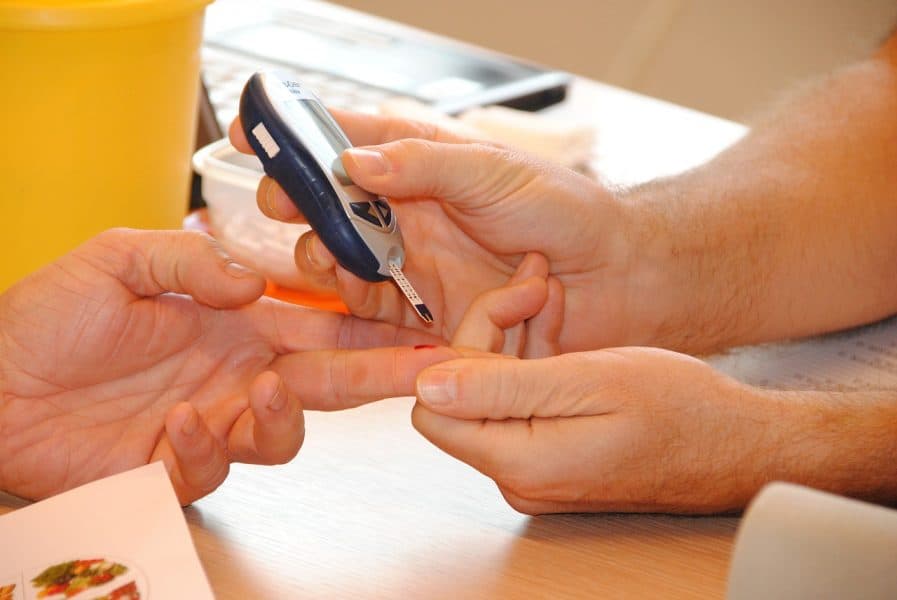
Diet
Changing your diet can help control your blood sugar level:
Eat a lot of fruits and vegetables, avoid sugary foods and drinks, eat fish, starchy and low glycaemic index (GI) foods that release sugar slowly e.g. pulses, lentils, muesli, whole-wheat pasta, beans, brown rice, all-bran cereal.
Exercise
Exercise lowers your blood glucose level so it can be an effective way to manage gestational diabetes. Ask your doctor about safe ways to exercise during pregnancy. Aim for at least 150 minutes of moderate intensity activity a week.
Medication
Your doctor may offer you medication if your blood sugar level is still not controlled about a week or two after you start dieting and exercising regularly, or if your blood sugar level is very high. You may be offered a tablet usually metformin or sometimes glibenclamide. In some cases, your doctor may offer you insulin injections.
Insulin injections may be offered instead of tablets if, you are unable to take metformin maybe due to its side effects, you have a very big baby, your blood glucose level is very high, your blood glucose level remains uncontrolled with metformin or if there is too much fluid in your womb (polyhydramnios).
If you are prescribed insulin, make sure you know how to inject it yourself, when to inject it, how much insulin to take and what to do if your blood sugar falls too low.
Your blood sugar level may increase as your pregnancy progresses, so even if your blood glucose levels are well controlled at first, you may need to take medication later in pregnancy. These medications will be usually be stopped after you give birth.
About the author
Nwasom is a pharmacy graduate and a pharmacist currently practising in the United Kingdom. I have great experience communicating with patients and their family as gained through working as a pharmacist in both the hospital and community pharmacy sector. I love writing so it was a natural thing to try and pass medical and health information on through writing.


